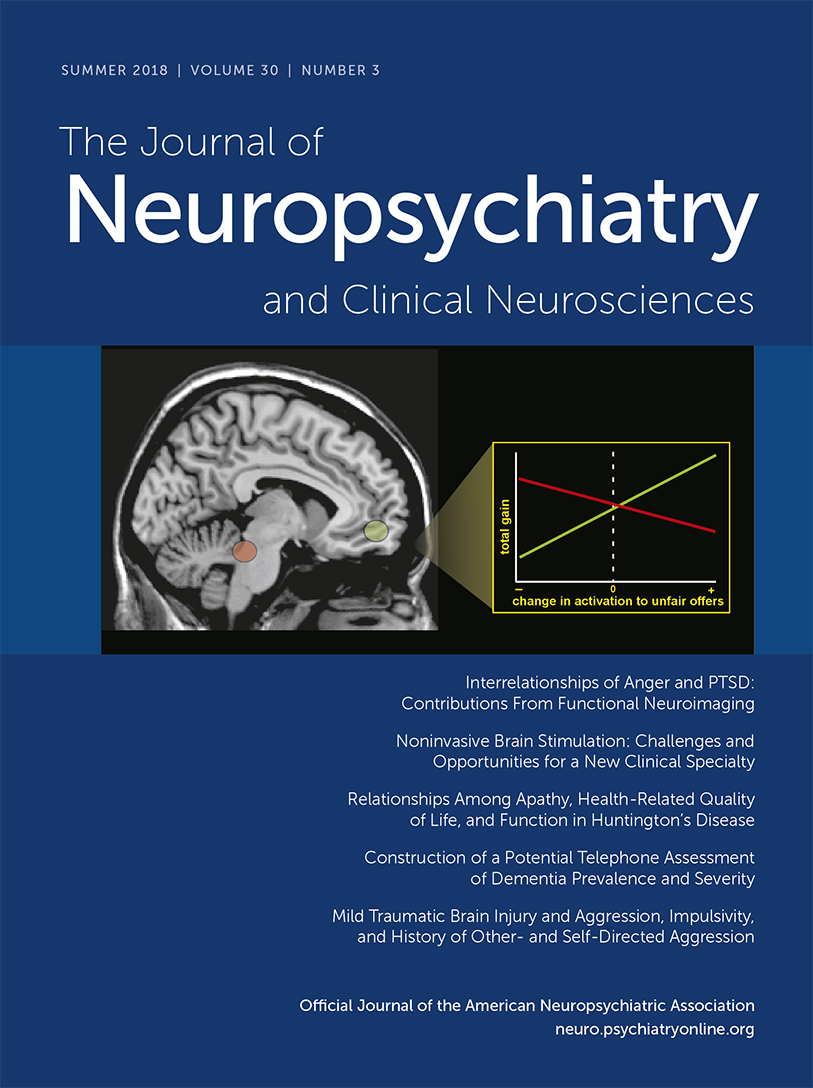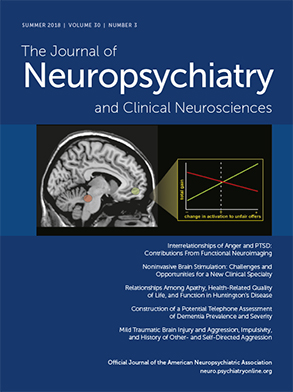Roots of Pediatric Neuropsychiatry
Neuropsychiatry as a specialty medical field may be considered a natural offshoot of modern neurology and psychiatry. However, the development of pediatric neuropsychiatry is less well-defined. In the latter part of the 20th century, general psychiatry training programs, which had been heavily geared toward talk therapy or psychoanalysis, gradually embraced the burgeoning revolution in psychopharmacology and became more medically oriented. Along with the positive results of empirical treatment studies and the ascent of categorical diagnostic systems, medical model psychiatry became more scientifically based, paving the way for the subspecialty of “adult” neuropsychiatry.
1,2On the other hand, the medical model and the revolution of psychopharmacology did not permeate most archetypes of child psychiatry. Developmental psychology and practical psychoanalysis dominated the field, even while general psychiatry had become more medically based. As a result, even today, neuropsychiatric conditions in pediatric populations are typically treated by other specialists. Interdisciplinary conditions, such as Tourette’s syndrome and epilepsy, are commonly addressed by child neurologists. Autism spectrum disorders and other intellectual or developmental disabilities are commonly addressed by pediatricians, often developmental pediatricians, or in some cases by practitioners designated as developmental neuropsychiatrists. Currently, no pediatric neuropsychiatry training programs focusing on interdisciplinary conditions, such as epilepsy or traumatic brain injury, exist. Thus, few child and adolescent psychiatrists use a “neuropsychiatric” paradigm for diagnosis and treatment.
Epilepsy as an Entry to Pediatric Neuropsychiatry
Despite the lack of clear characterization of pediatric neuropsychiatry as a subspecialty, a marked clinical need for this type of clinical expertise exists. In one particular condition, epilepsy, the lack of neuropsychiatry services has proven to adversely affect efforts to provide comprehensive care and optimize outcomes.
3 Increasingly over the past decade, a greater appreciation for psychiatric comorbidity in epilepsy has been appreciated in adult and in pediatric patients.
4 A common lament among neurologists is the shortage of psychiatrists available to provide consultation and comprehensive care.
Anecdotally, it has been noted that in many epilepsy programs, neurologists avoid inquiries about depression or suicide due to fear of being in the uneasy conundrum of requiring prompt consultation that cannot be reliably obtained. Facing a dearth of child psychiatrists, neurologists have become dependent on social workers and neuropsychologists to serve as requisite specialists amid the various components in tertiary care pediatric epilepsy programs.
5 A building grassroots effort in clinical and academic neurologic practice has highlighted endeavors to establish acumen in child psychiatry specifically to provide comprehensive care and to improve outcomes.
6 The academic literature has continued to expand in the area of neuropsychiatric complications of epilepsy, although treatment efforts have only slowly become more refined, given the absence of a high-quality evidence base.
7Neuropsychiatry in Epilepsy Programs
Given the clear need to provide neuropsychiatric care in pediatrics, we sought to start a pediatric neuropsychiatry clinical program. We started the program at the Kennedy Krieger Institute, which is a tertiary care facility devoted to disorders of the brain and spinal cord in children. Most clinicians are subspecialized neurodevelopmental pediatricians or pediatric neurologists, with a sizeable contingent of child psychiatrists and psychologists, many with notable expertise in caring for children and adolescents with autism spectrum disorder or other intellectual or developmental disabilities. Many patients seeking care at Kennedy Krieger Institute require a complementary neurologic and psychiatric approach to evaluation and treatment, if not physical involvement of multiple disciplines. The institute is physically adjacent to the campus of Johns Hopkins Hospital, which provides convenient clinical referral and academic affiliation and collaboration.
To be interconnected with the institutional culture, we emphasized neuropsychiatric comorbidity of a single condition and defined the program as the Neuropsychiatry in Epilepsy Program. We incorporated administrative support staff to gather demographic information and process referrals. Most referrals initially came directly from epileptologists who identified psychiatric complications that could not be well managed in the outpatient neurology setting. Most patients who were referred were of pediatric age. However, depending upon availability, we also offered evaluations to young adults. We did not offer to provide geriatric evaluations.
Focus of Neuropsychiatric Assessment
Typical evaluations include nursing assessments, medical and neurologic history, targeted neurologic physical examinations, and office-based cognitive testing. Neurologic and mental health evaluations are conducted during the same session. Parents of prospective patients complete clinically oriented questionnaires geared toward general behavioral conditions, though skewed toward impulse control, mood, and executive function. Examples include the Behavioral Assessment System for Children,
8 the Behavior Rating Inventory of Executive Function,
9 and the Quality of Life Scales for Epilepsy.
10 Adolescents complete self-report versions of these measures whenever appropriate.
Evaluations include details consistent with standard child psychiatry assessments. However, additional emphasis is given to the presence of psychiatric symptoms in the context of underlying seizure disorder. Furthermore, an additional complication is that epilepsy pathophysiology may be considered to extend well beyond discrete seizure events; prodromal and postictal periods may extend for hours or even days. Thus, the timing of behavioral symptoms often relates to seizure events at least peripherally. Careful assessment of seizure localization is also important, since psychiatric conditions may be associated with specific seizure types or localization. Temporal lobe foci seem to be preferentially associated with mood symptoms, and attention or learning disorders may be particularly common in patients with generalized seizures.
11,12Rather than exclude psychiatric conditions that seem closely associated with seizure events, we consider diagnoses broadly. We found it very difficult and often impractical to separate psychiatric illness from epilepsy or even to consider either condition as truly episodic. Epilepsy is usually a chronic condition, with flare-ups in the form of seizure events. However, psychiatric illness may take the same form, especially in the form of episodic mood disorder or as psychotic breaks. Because actual seizure events cannot be fully isolated from the pathological processes of the underlying epilepsy, it may be that the associated psychiatric disorder also cannot be separated from the underlying epilepsy. For that reason, we did not consider diagnoses such as adjustment disorders or other conditions that implied that psychiatric disorders would always result from or be secondary to epilepsy.
Neuropsychiatry in Epilepsy Program Evaluations
Over the first year of the program, nearly 100 evaluations were completed. The vast majority of the referrals came from neurologists or epilepsy specialists. Most referrals came from the wider mid-Atlantic geographic region, with some referrals from overseas or from different regions of the United States. The most common psychiatric comorbidities identified were attention deficit hyperactivity disorder and anxiety disorders. Some patients had learning disorders or intellectual or developmental disabilities. Patients with nonepileptic episodes were relatively uncommon. The most common referral questions had to do with hyperactive, impulsive, or aggressive behavior or anxiety and mood symptoms.
Approximately one-third of the patients referred sought ongoing care and continued with treatment that included medical strategies, individual and family therapy, and, in some cases, group therapy. Groups that were specific to epilepsy formed whenever critical numbers of children and adolescents could be recruited. Referrals for full batteries of neuropsychological testing were done when school placement and curriculum refinement were significant concerns. Treatment team members routinely communicated in order to facilitate a cohesive approach to medication trials and to determine epilepsy stability. Case conferences were done for patients of concern, either informally or in the context of weekly meetings.
Pressure for Expansion of the Clinical Focus
Gradually, we realized that the restriction for epilepsy, while sufficient to well surpass productivity targets of involved clinicians, only scratched the surface of the potential conditions addressed by a pediatric neuropsychiatry approach. In the typical course of assessing referred patients within the program, we noted that in some cases the epilepsy was not active. Instead, other conditions were more prominent, namely migraines and complex metabolic conditions.
Over subsequent years, we started accepting referrals for persons with other neurologic conditions that similarly had complicating psychiatric symptoms. Illnesses include a variety of categories, including congenital conditions, brain injury, metabolic disorders, genetic conditions, and immunologic conditions. After accepting these referrals, we found that the number of persons with congenital brain diseases or complex medical conditions increased. As the focus expanded, we also found that anxiety disorders and panic disorder were more prevalent in referred cases.
We also received pressure to expand our age range for evaluations. While we had typically accepted referrals for young adults with epilepsy, there was strong interest in us evaluating young or middle-aged adults with complex conditions. As much as possible, we welcomed these referrals, and eventually noted that nearly one in five referred patients was over 18 years old. The goal for all of these neuropsychiatric evaluations was the same: to address conditions that overlapped medical specialties and involved complex brain and behavior relationships. In doing so, the goal was to formulate treatment recommendations and understanding markedly greater than what could be obtained with a narrower paradigm of treatment. Demographic characteristics of patients referred early and later in the program are presented in
Table 1. Details of the conditions present in patients referred in the first year and for the total of the program (up to 3 years) are summarized in
Table 2.
The Future of Pediatric Neuropsychiatry
Our experience with the Neuropsychiatry in Epilepsy Program has been very persuasive. A tertiary care clinical neuropsychiatry program geared specifically toward epilepsy can be very successful. Additionally, the demand for neuropsychiatric consultation in pediatrics extends beyond epilepsy and also extends beyond typical pediatric ages. Persons of transitional age seemed to be particularly in need of neuropsychiatry services. At this point, our clinical services have become saturated, and we are seeking additional clinicians to enable us to expand services.
Pediatric neuropsychiatrists are rare—only a few are members of the American Neuropsychiatric Association—and no established training curriculum for this subspecialty exists. Yet, given our experience, the field is in very high demand. Perhaps a similar path of development might have occurred in undergraduate education in the past. Not so long ago, colleges would only offer students a single option to major in biology. Students seeking a curriculum in neurosciences would have little recourse but to select biology or psychology as their concentration and then try to find interdisciplinary experts who were rare, or if present were likely to be mavericks within their home science departments.
Today, colleges routinely offer multiple subtypes of biology majors and in many cases the option to major in neuroscience. The availability of different courses of study reflects the new knowledge base and the trend toward an interdisciplinary approach. Clearly the same needs to apply to subspecialty fields of medicine in order to reflect the changing times and improved knowledge base. Pediatric neuropsychiatry is intuitively a subspecialty field that warrants expansion. Our experience of applying neuropsychiatric paradigms to treatment in this population has been rewarded and sustained by overwhelming clinical demand. That alone suggests that pediatric neuropsychiatry has an important and bright future.
Acknowledgments
The author thanks the Care Center and Nursing Staff in the Department of Psychiatry at the Kennedy Krieger Institute.

